The best expedition is always the most uneventful one.
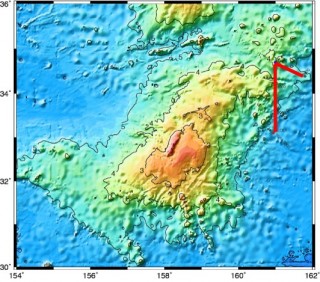
This usually means that things are going smoothly, and we are succeeding in obtaining what we came to get. That said, we just turned into the third track line according to our cruise plan, with an estimated twelve hours until the line survey is complete. However, the average time it takes to complete a line will increase as the distance across Tamu Massif increases. Maggie the magnetometer and the multi-beam are streaming in their data as per our survey plan, and scientists are processing some incredible images showing the detail of the volcano’s surface.
A Visit from Mother Nature
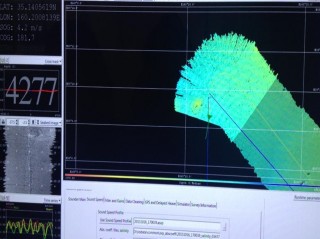
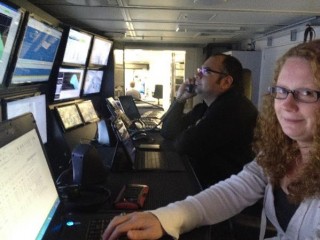
Even though we are thankful for what we have collected as of now, we are also aware that science plans change all the time, especially when Mother Nature decides to make her presence known. Currently, the weather is spectacular, almost glassy calm, but lurking in the background is Typhoon Champi, located hundreds of miles south of us near the Marianas Islands and moving northwest. Weather predictions have Champi turning to the north in our direction in three to four days. I think the big question will be whether the high pressure ridge that is currently over us will break down and let Champi come this way. Weather predictions seem to say so, but remember, we and Champi are in the middle of the ocean where weather sensors are sparse, so the prediction may not be true. The team will be watching this typhoon very carefully and at some point, the captain may have to move us away from Tamu Massif if it appears Champi wants to come this way.
It’s All in the Name
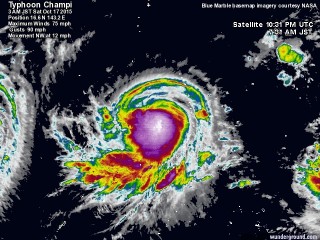
Champi is categorized as a typhoon, which is the same weather phenomenon as a hurricane or cyclone. Different places around the world use different names for these storms. For example, in the Atlantic and Northeast Pacific, the term “hurricane” is used, while the same type of disturbance in the Northwest Pacific is called a “typhoon”, with “cyclones” occurring in the South Pacific and Indian Ocean.
According to the National Ocean Service, the perfect conditions for these storms include a pre-existing weather disturbance, warm tropical oceans, moisture, and relatively light winds. If the right conditions persist long enough, they can combine to produce strong winds, incredible waves, and lots of rain.
Staying Our Course
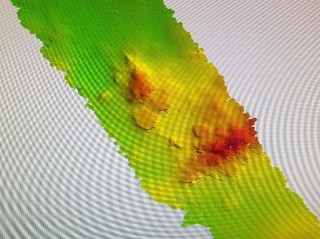
All in all, we will continue to stay on course and conduct research at Tamu Massif, for as long as Mother Nature allows. Field science would not be what we have come to love and enjoy if she did not give us challenges to overcome. Ironically, it is during these times that we realize how little we know about the seas we sail and the phenomena they create. From the supersize volcano we are studying to the super storms that form quicker than we can predict, it is blatantly obvious how much more work is needed to understand our oceans.
Make sure to follow our next few blogs as we explain more of why we are here and what we are trying to learn about Tamu Massif.

